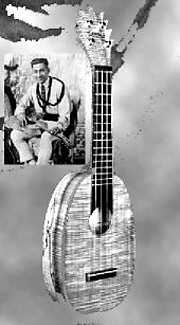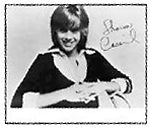I have never fantasized about vacationing in Hawaii. Thailand and Morocco, yes . . . but Maui? No way.
This wasn’t always the case. As a tot, I went through a phase where I daydreamed of visiting our 50th state. This was back when Dad traveled on business frequently, and the airlines were pushing cheaper fares to the former Sandwich Islands. He’d return from trips bearing promotional trinkets that featured images of smiling brown people, clad in leis and colorful fabrics. Even in childhood, I was powerfully drawn to men who wore skirts and accessorized with flowers.
My interest began waning in high school, thanks largely to a classmate who had spent his youth there. His only blatant criticism of native culture that I recall was the pronouncement that he’d sooner eat wet cement than ever touch a bowl of poi. But what made me suspect that Hawaii wasn’t exactly Fantasy Island was his endless fashion parade of Kliban cat T-shirts, direct from the factory outlet store.
These days, I can think of a million reasons why I wouldn’t want to visit. Mount St. Helens and one too many Irwin Allen films have left me with a healthy fear of volcanoes. The Discovery Channel’s “Shark Week” has ensured I’ll never attempt to hang ten. And I’ve spent too many years eradicating even the slightest hint of a swish in my walk to risk undoing my hard work with something as frivolous as a hula lesson.
I’d always been under the impression that my parents shared my disinterest. Dad was stationed in Germany early in their marriage, and even after they returned to the US, their ideal getaway was shopping for stemware in the Black Forest, visiting a few cathedrals, and washing down a plate of schnitzel and sauerkraut with a stein of local brew.
But shortly after retirement, my folks started making regular pilgrimages to Hawaii. Suddenly, photos of them sitting in skiffs sailing over blue waters, festooned with leis, featured prominently on their Christmas cards. My birthday now brought pounds of Kona coffee, carved wooden masks, and shirts so garish I could pass for a bartender at Trader Vic’s.
But did they ever bring back music from Hawaii for me? Hell, no. Which isn’t surprising. My family traditionally purchases presents intended for the person they pray I’ll become someday, as opposed to the one I am, and I do the same to them. I’m still holding out for a Christmas sweater that’s black—not blue or brown—and my father continues to let that 4-CD collection of LA cool jazz from the ’50s gather dust.
Despite a freezer full of chocolate-covered macadamia nuts, what I knew about Hawaiian music—once you got past Don Ho and “My Little Grass Shack”—couldn’t fill a coconut shell. The High Llamas’ 1997 CD Hawaii is lovely, but it has more to do with Pet Sounds than any notions of authenticity, and the steel guitar sample on which Aleem’s 1996 downtempo dance gem “Why Hawaii” is based was lifted from Patsy Cline’s “Walkin’ After Midnight,” for heaven’s sake.
But now I know better. A few weeks ago my friend Jason and I set out to climb Mailbox Peak. My companion, whose taste in music makes mine seem downright plebian, kept playing a jaunty, old-timey ditty called “Singin’ in the Bathtub” over and over on the CD player as we drove along the back roads, searching for the head of the trail. The lyric, a celebration of taking a long, hot soak, was amusing, but what transfixed me was the lead instrument, with a crisp, twangy timbre distinct from the mandolin, ukulele, or banjo.
Transferred from the original 78, the song by Four Hawaiian Guitars is just one of 23 delights preserved on Hawaiian String Virtuoso: Acoustic Steel Guitar Classics from the 1920s (Yazoo), an anthology of cuts by King Bennie Nawahi. Nawahi, born on July 3, 1899, was a master of the mandolin, guitar, and harmonica, and made a killing in vaudeville as a ukulele player; his showstopper was whipping off lightning-fast solos with the tiny instrument held behind his head. And 70-plus years later, his mastery of the acoustic steel still comes as a revelation, especially to a dolt like me who’s only ever heard cheesy (and apparently much easier to play) electric steels.
Nawahi’s repertoire covers an impressive range: country, hot jazz, blues, traditional Hawaiian melodies, all of them infused with vibrancy. The lyrical preoccupations (“Waikiki Blues,” “Aloha Means I Love You”) betray concessions to the mainland’s obsession with South Seas exotica, but there’s nothing phony about the charm of Nawahi and the many ensembles he fronts on this collection. I was so taken, I bought two copies—one for myself, and one for my folks.






